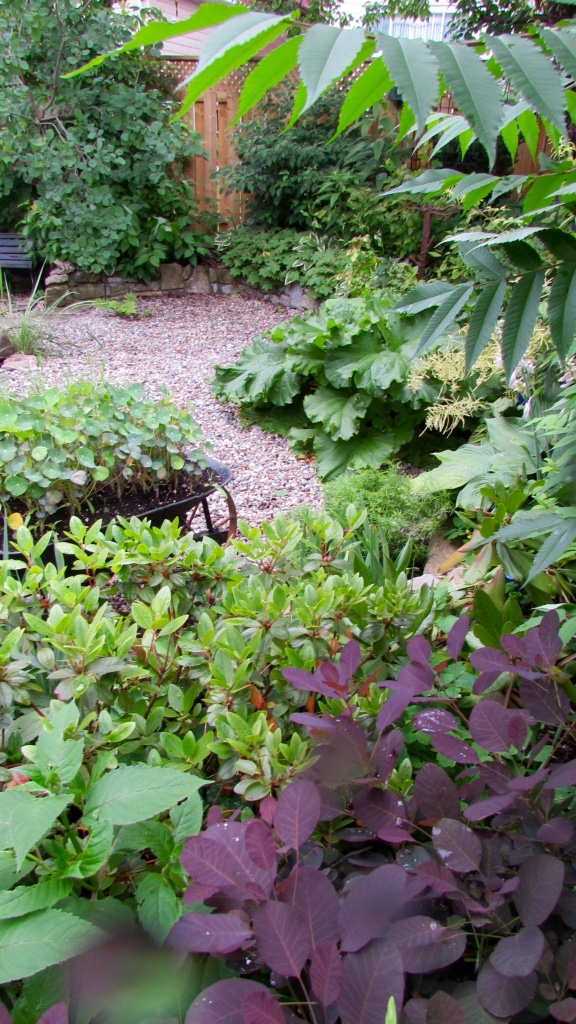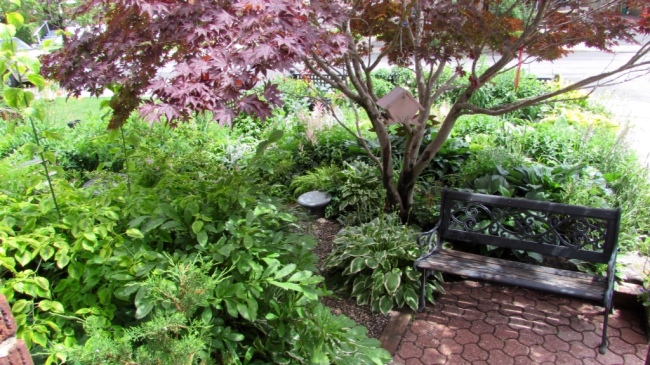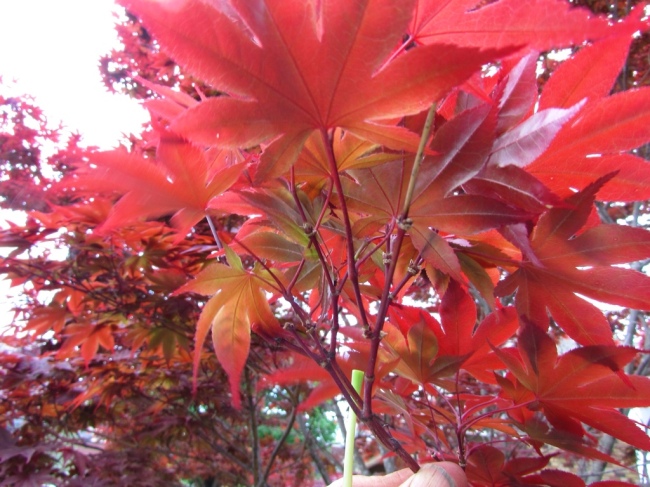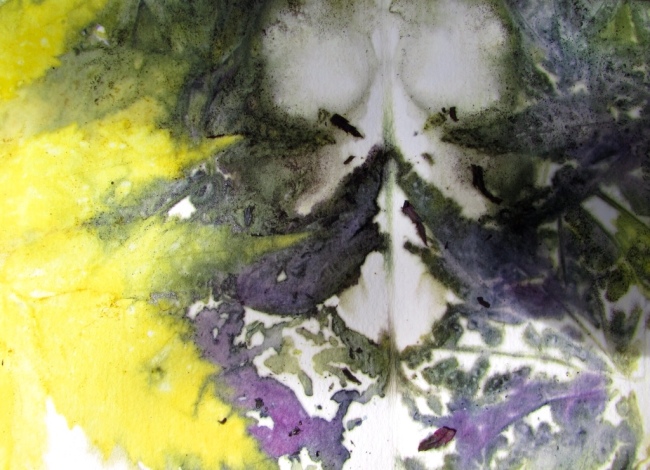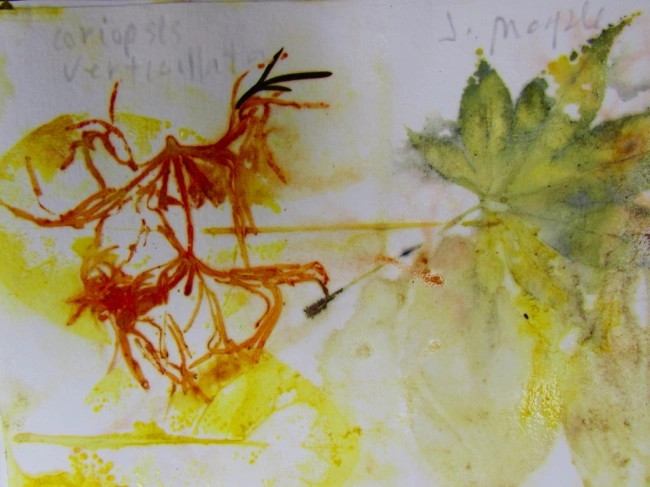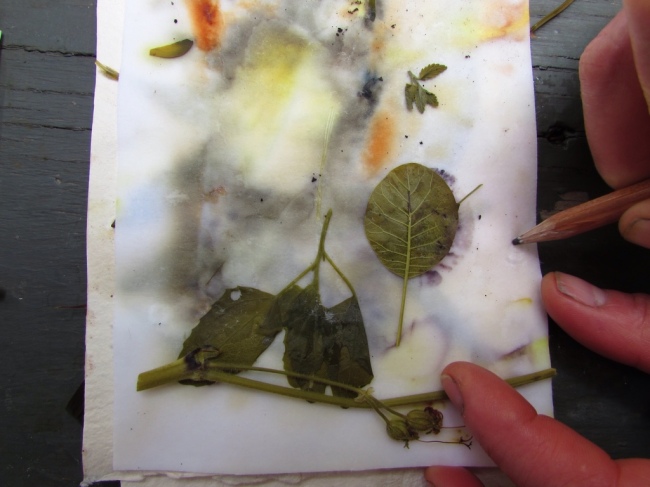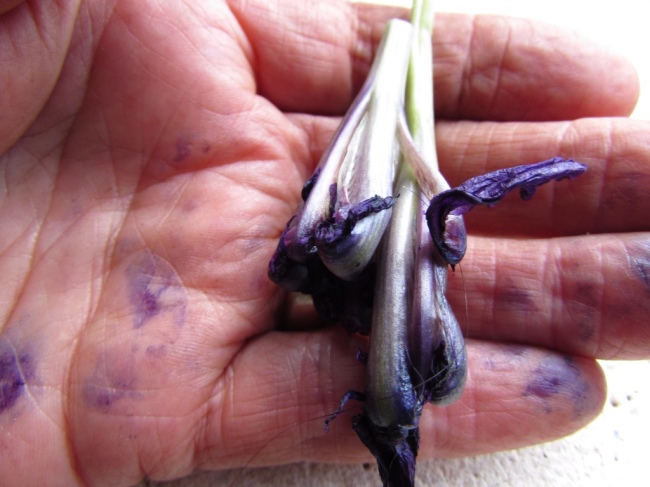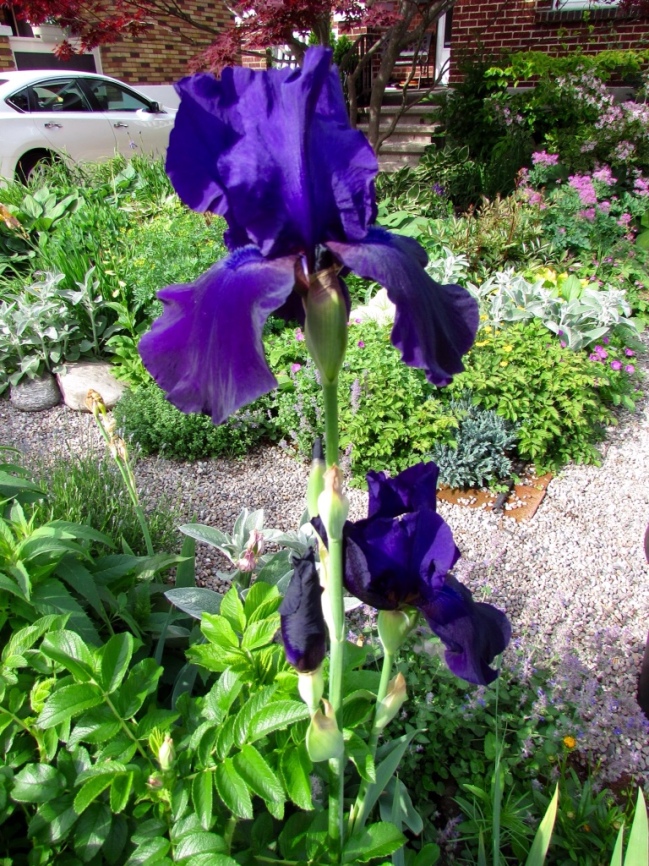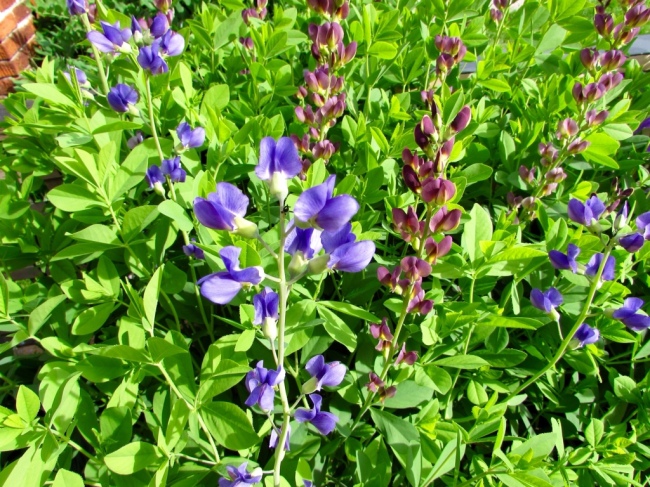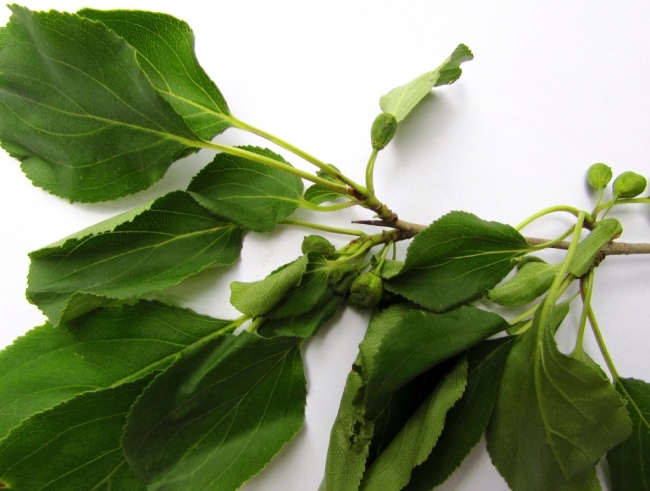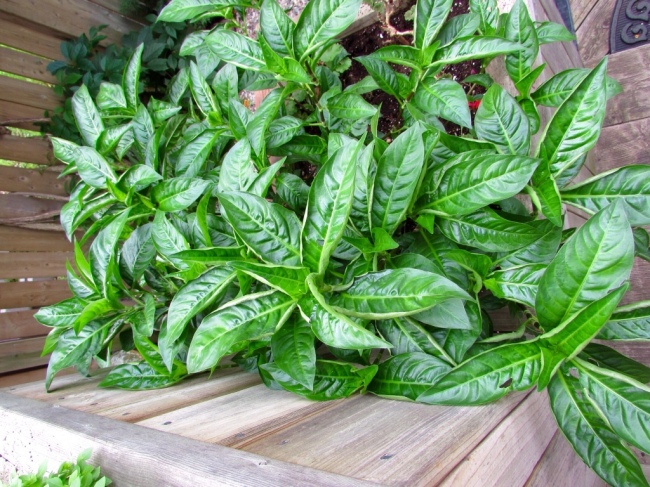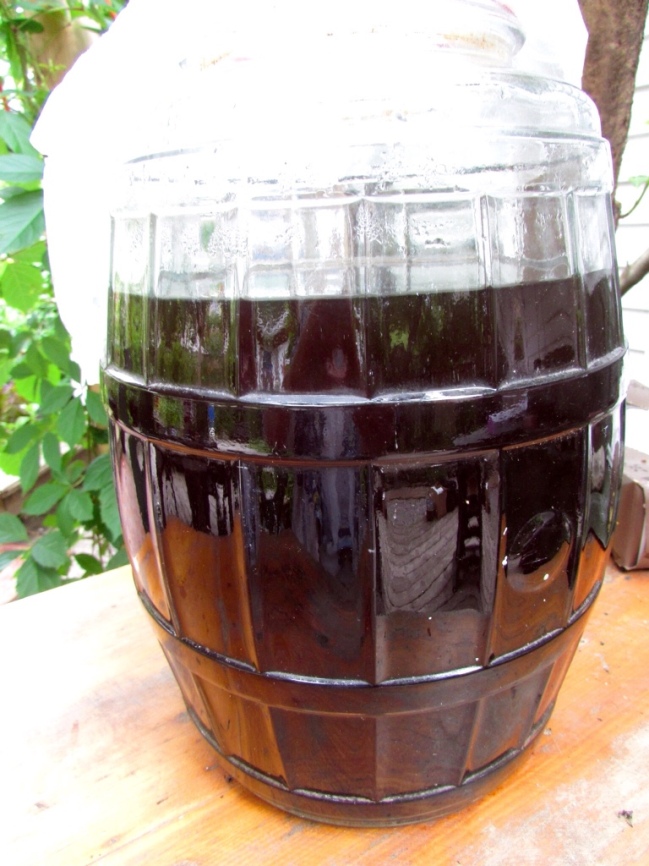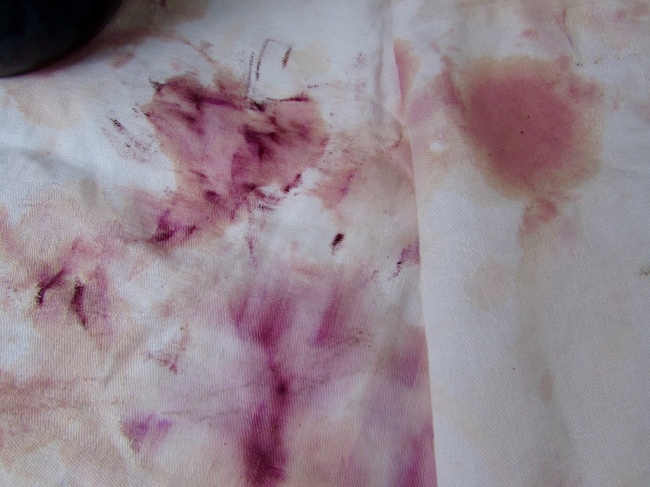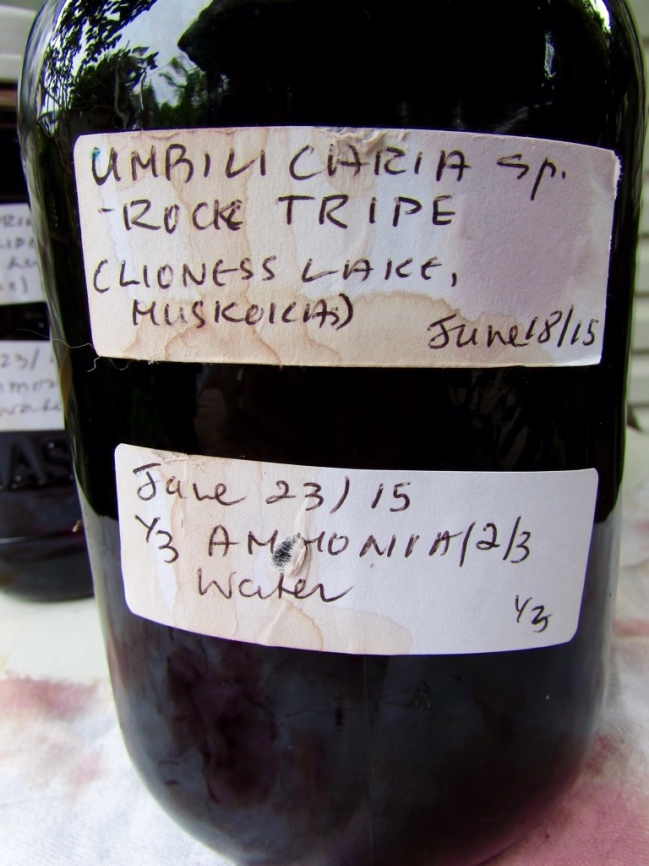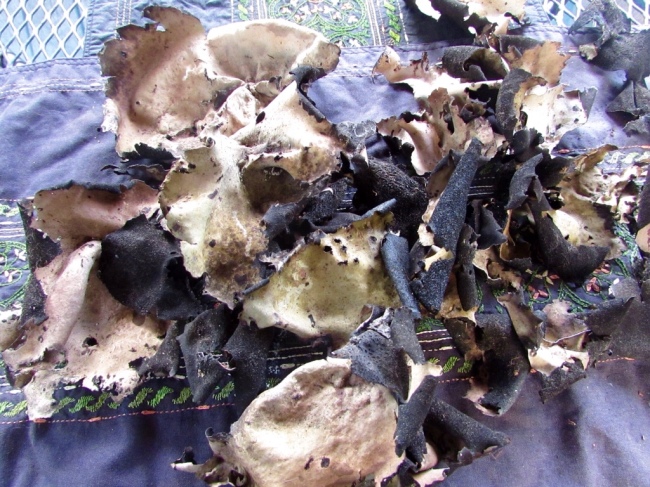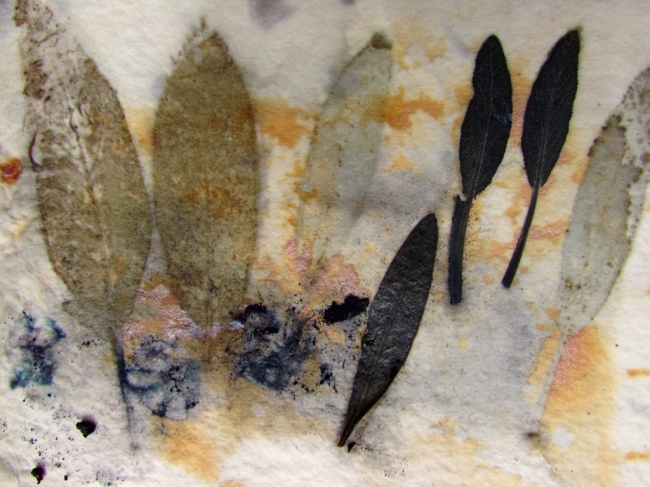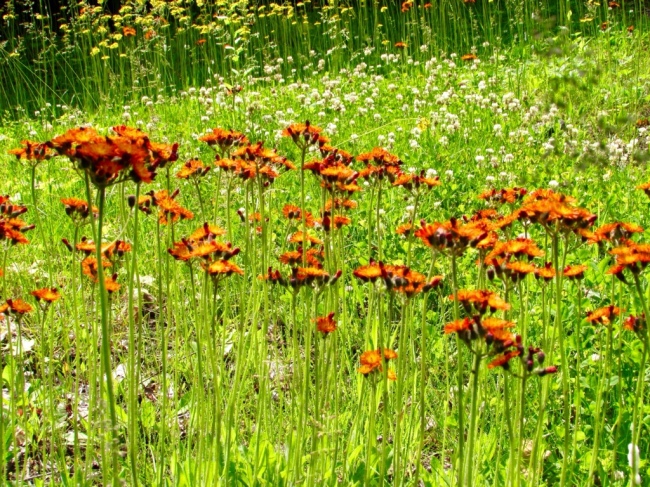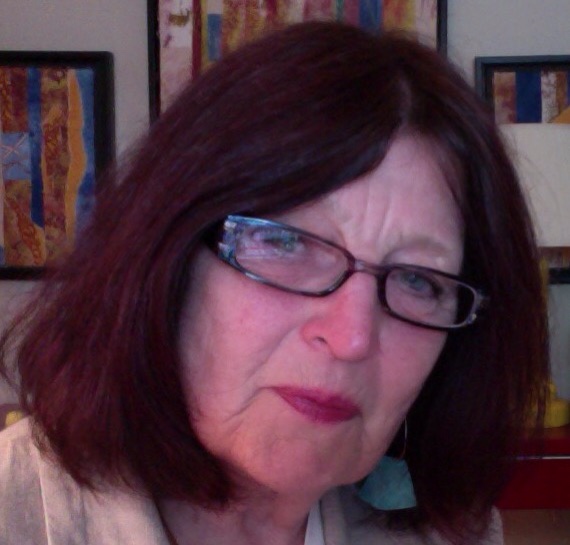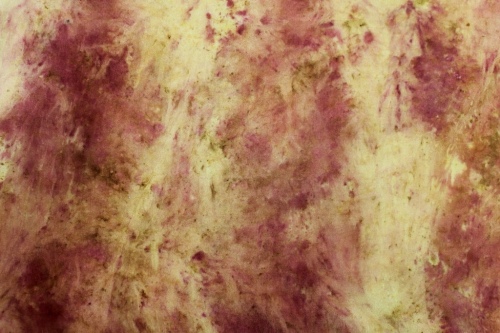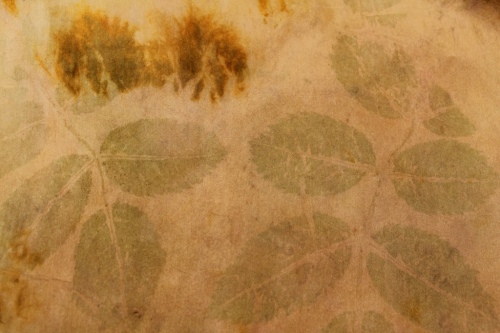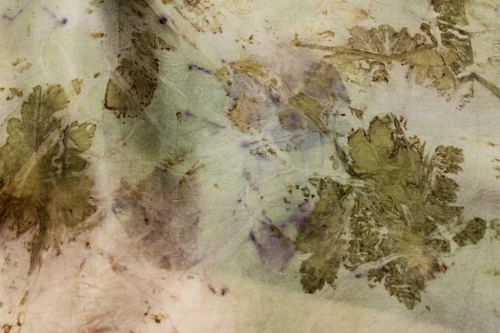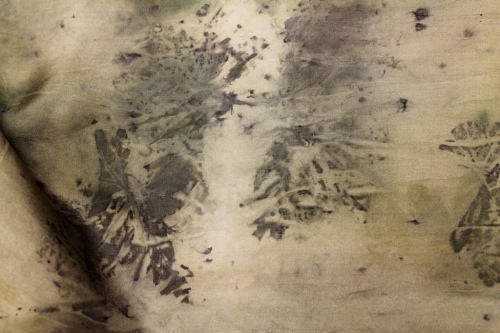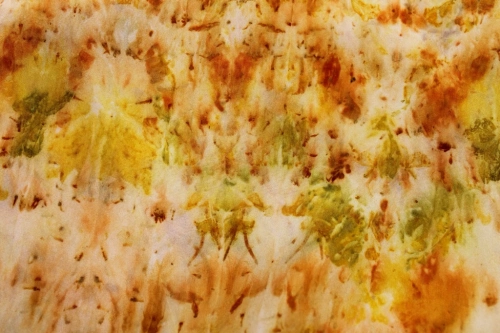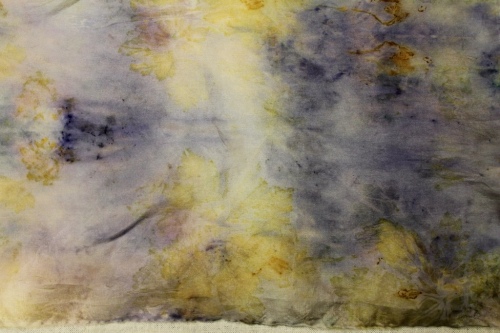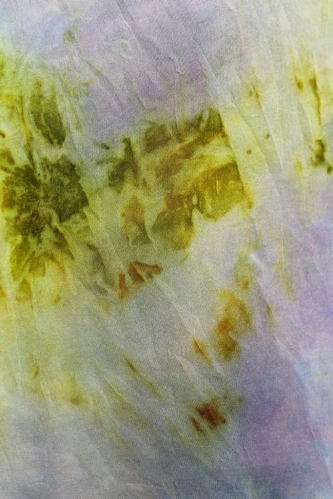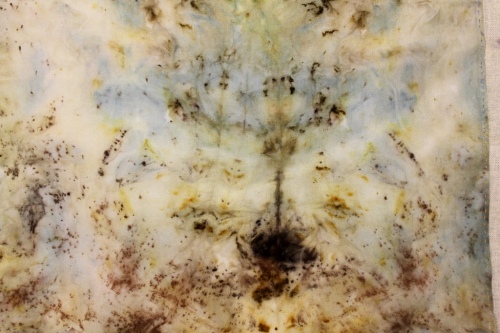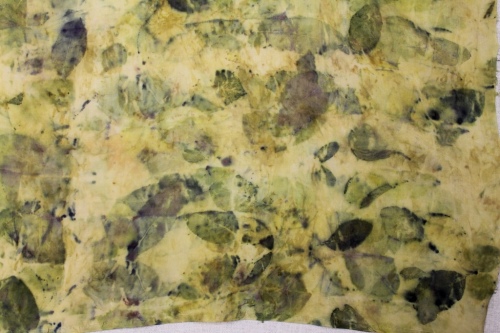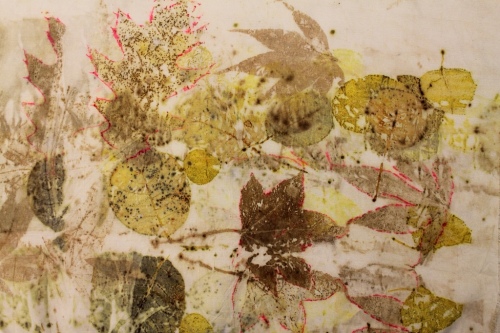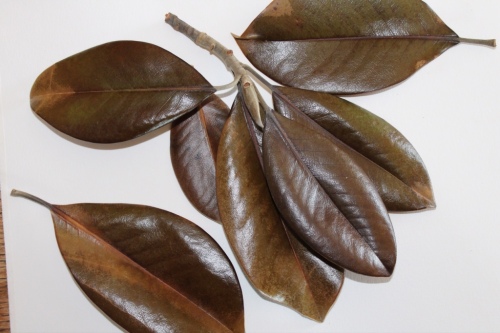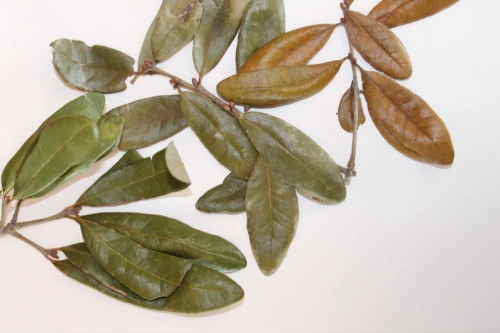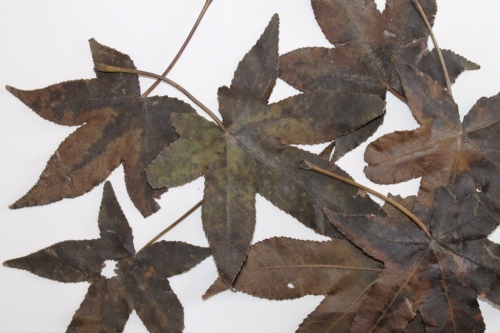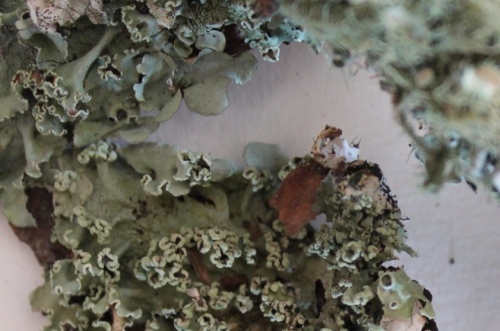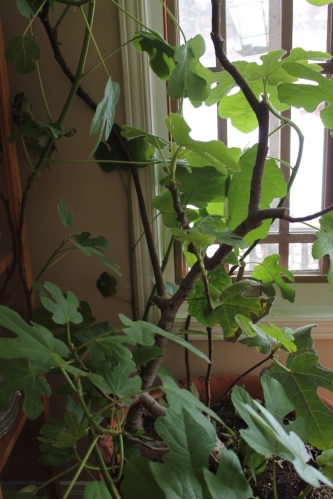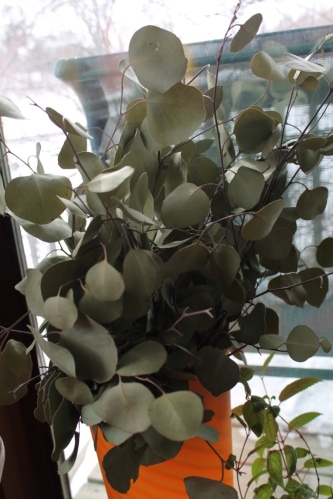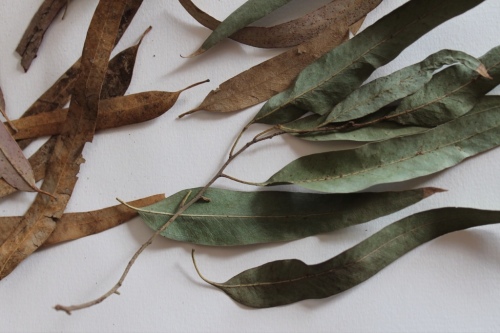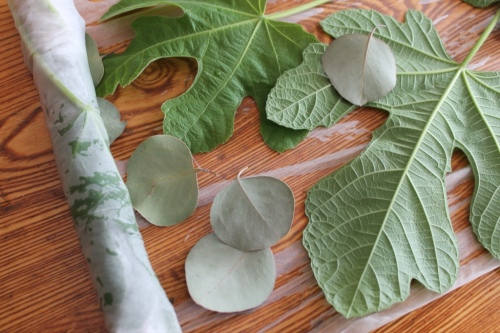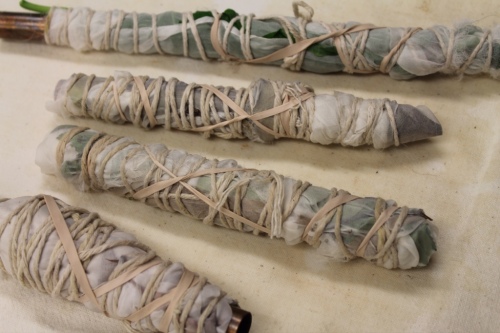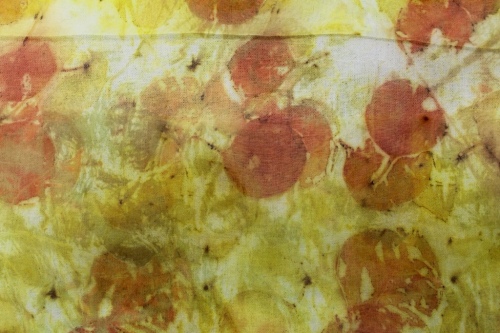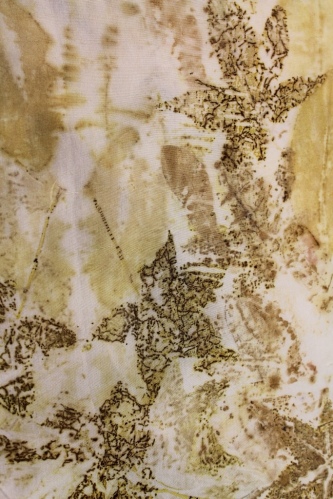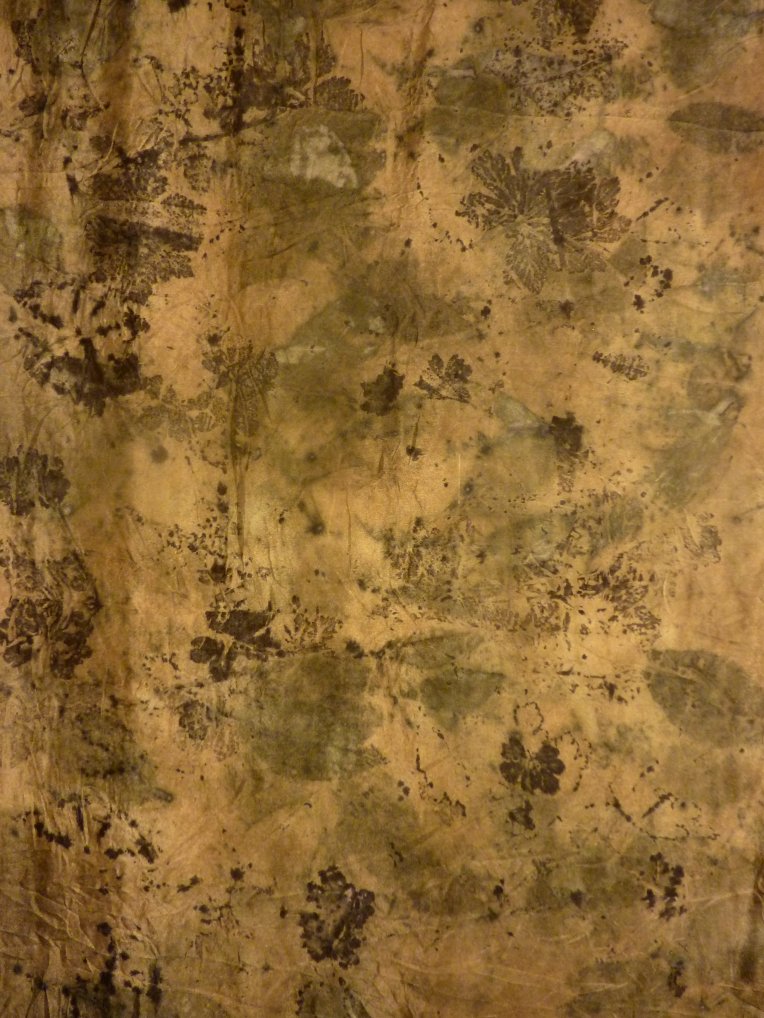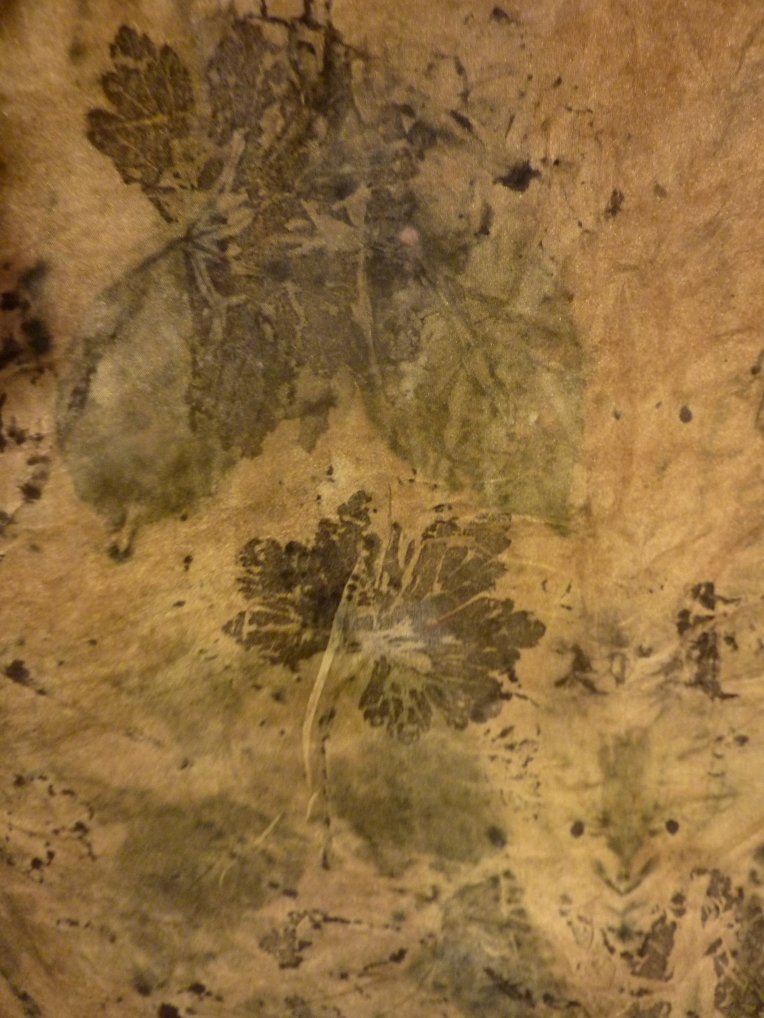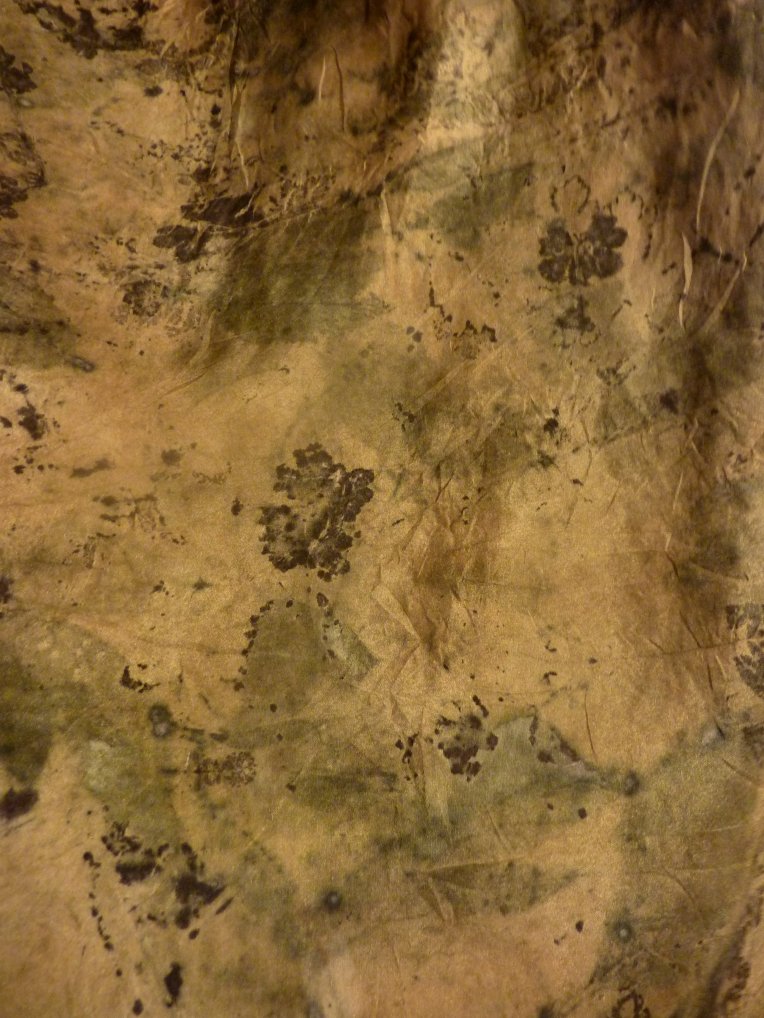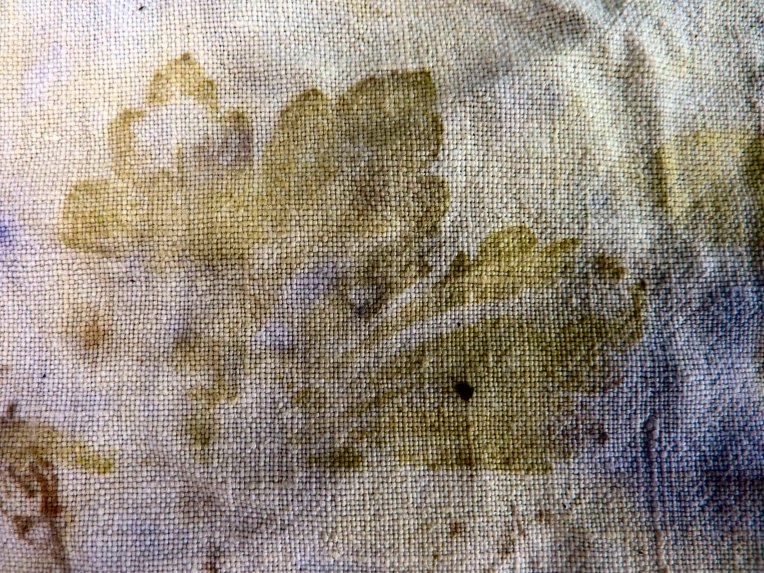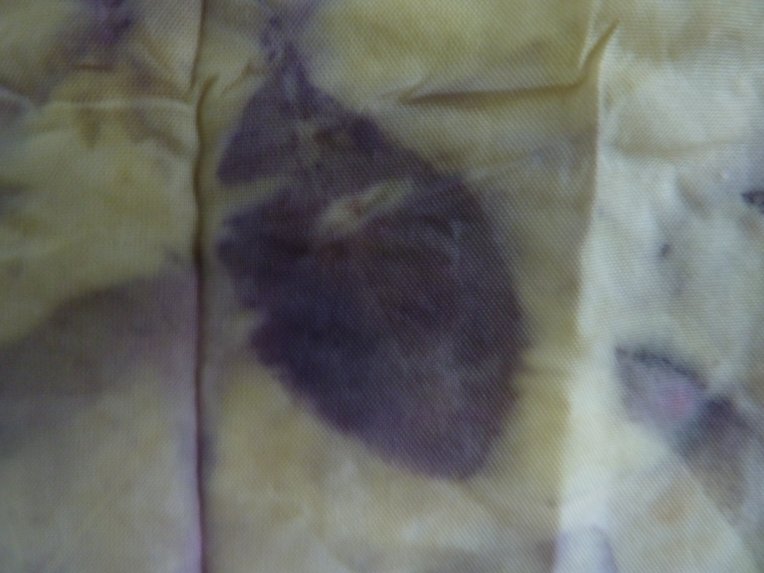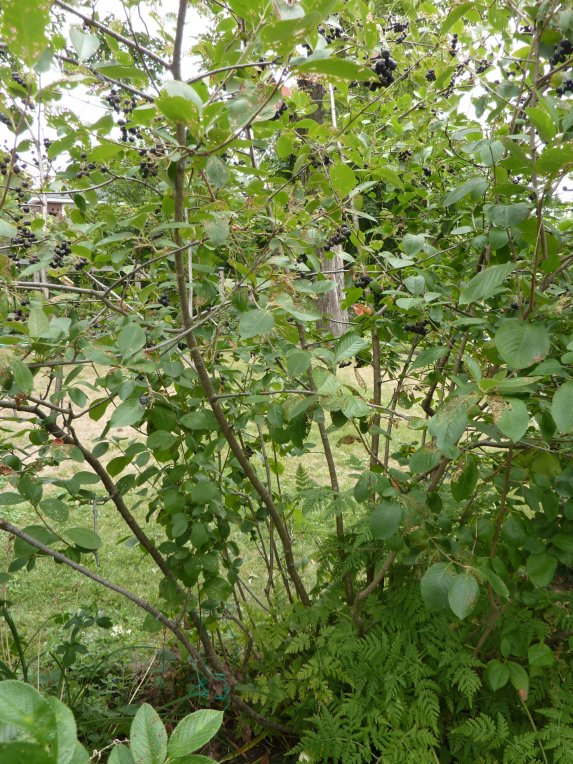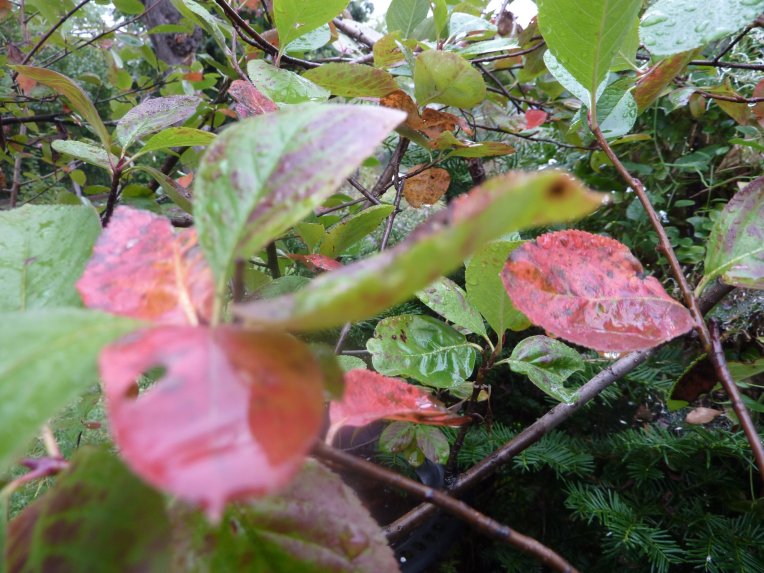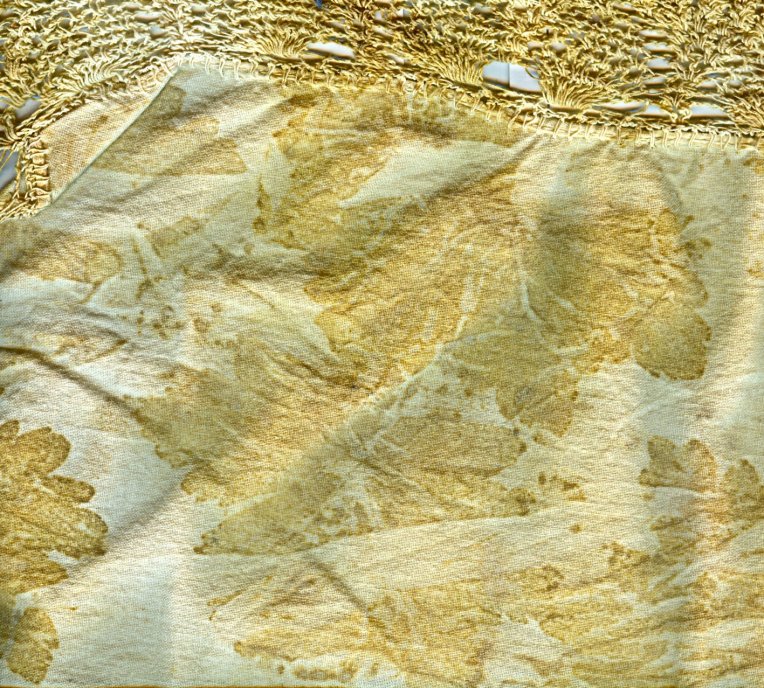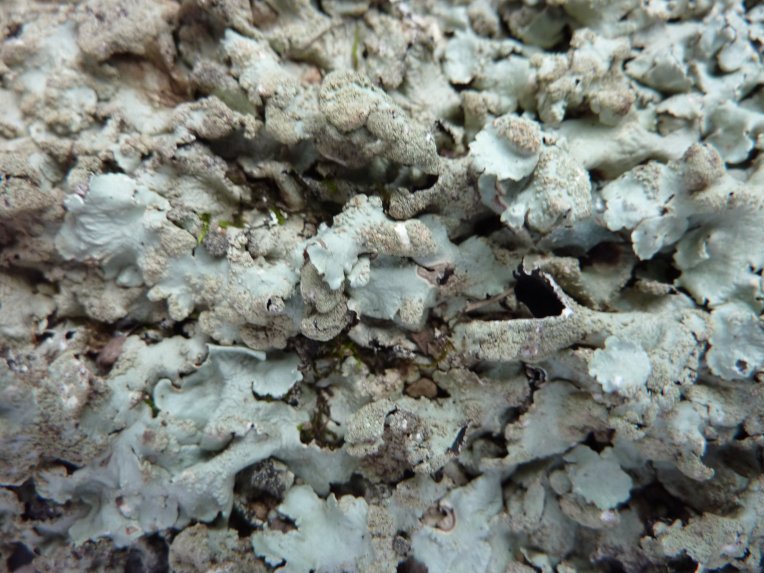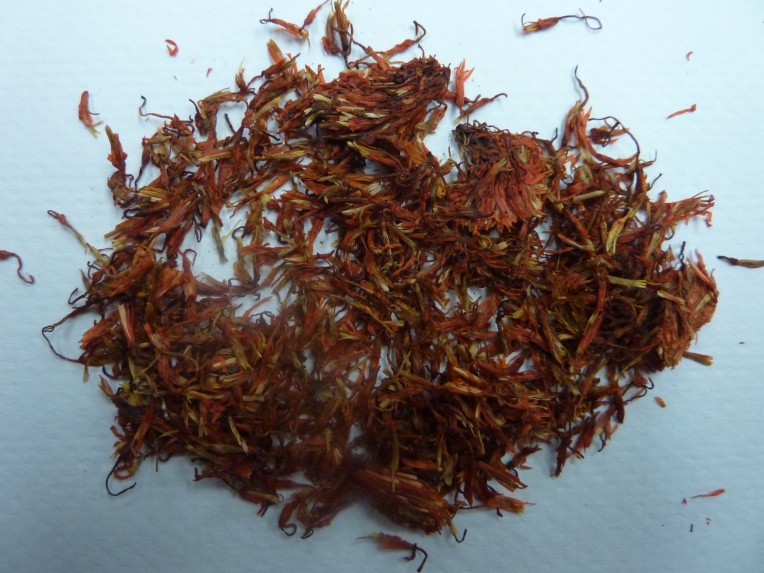Through many dangers, toils and snares I have come since last post, dear Reader! Pinched nerves, spine miseries, carpal tunnel syndrome have kept me away from blogland and the garden for too long….But TG for physio and MRI machines…Still, I had to save my mobility and energy for family visits (new baby), a family trip to the Muskokas and a couple of eco dye classes that I gave in June. But I did keep taking pics of the June dye plants growing in nicely without me fussing; so here are some of them ( even though we are half way through July) along with a few samples of eco prints done by students in June:
Cotinus coggygria (R) with Rhus typhina (above R); nasturtiums in the wheelbarrow ( for hapazome) and dogwoods by the fence.
Front garden with the eco print star, red Japanese maple, probably “Bloodgood”
At this time of the year, this red leaved maple prints greens and purples. For complementary contrast, it is paired with yellow-primting sumac ( a student print).
And here is the Acer palmatum again, this time green, with red Coreopsis verticillata as colour complement, and yellows from baptisia as analagous colours.
Coiinus surprises in June, with red coreo for a bit of sizzle:
Iris always blue:
Tall bearded blue iris:
Baptisia australis: blue and purple blooms on the same plant! Fluorescent yellow from ththe leaves, deep blue stains from the little flowers:
This plant is NOT in my garden: Rhamnus cathartica (buckthorn) is an invasive non-native soo fair game for June foraging. Green from the berries, a trad dye plant in Europe. The local Buckthorn Police were happy that this Most Wanted on their list had been hunted down…
Japanese indigo ( Persicaria tinctoria): two overwintered plants that I layered and that consequently filled the whole planter: a plant with the will to live and leave a legacy; dye pot coming.
I still have loads of dried J. Indigo from last year, plus a 2014 vat that will get reactivated later this month:
The very well informed and generous mad dyers over at FB pageThe Wild Dyery have told us how we can get the vat going again.
Above are prints from a lichen solar dye pot that I started on my return from the Muskokas where I found huge rocks covered in umbilicaria (Rock Tripe) lichen, and which our B&B owners allowed me to gather.
The liquor looks like rich red wine at the moment; I shake it to areate the jar each day and I catch the dye drips on a piece of linen under the jars. The underside of the lichen is green when wet.
The umbilicaria, above. Not sure of the variety. FYI: The ethics of collecting lichen are in still in dispute. I feel comfortable having collected three small jars worth from over a large area on private property where a lot of the lichen has detached spontaneously from the rocks. The colour will fully develop in about six months.
A lovely print by expert linocut printmaker and teacher Deidre Hierlihy who took a little eco print instruction session from me this month; print on handmade Canal paper by Saint Armand. Smooshed blue aronia berries with Salvia officinalis (culinary sage) and rust prints.
One of my favourite wild flower scenes in the Muskokas: orange Indian paintbrush (talleja) backed by white clover and tall yellow hawksweed. Native peoples used the talleja for pigments according to Moerman ( see my refs page)
Last pic is of ME, dear Reader. I have been reluctant to show my face and be somewhat personal, but I know you perhaps wonder who is speaking to you and what I might look like. So here I am, dressed for the photo and right after I had my grey hair dyed…I cannot tell a lie, paper was not the only thing that got dyed in June… I got these great copper-oxidised earrings from the kids for Mother’s Day; the kids insisted I send them a pic with me wearing them; so I am daring to share it with you. The earrings were made by the very talented young jeweller artist Shane Cook, a grad of NSCAD. Behind me in the pic are some of my embroideries. A couple of these works will soon appear in a text book about modern textile art embroidery published by the Hong Kong Polytechnical University.
Next post will be in July!
Wendy

